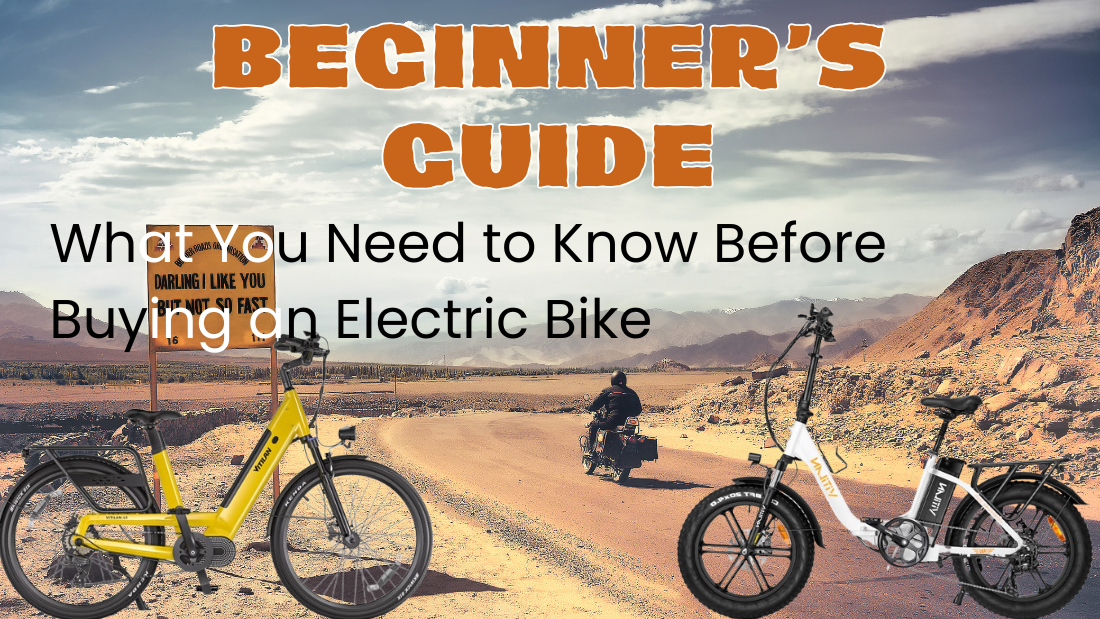Are you ready to take your biking experience to the next level? Whether you’re a seasoned cyclist or a newcomer to the world of electric bikes (e-bikes), you’re in for an exciting ride. Electric bikes are revolutionizing the way people commute, explore their neighborhoods, and even tackle steep hills without breaking a sweat. But before you hit that “buy” button, there’s a lot to consider. This Beginner’s Guide will walk you through everything you need to know before purchasing your very first electric bike.
What Exactly is an Electric Bike?
Let’s start with the basics. An electric bike (or e-bike) is a bicycle that features an integrated electric motor to assist with pedaling. The motor kicks in when you start pedaling and provides a boost, making it easier to travel longer distances, ride uphill, and maintain higher speeds without much effort.
E-bikes come in a variety of designs, from sleek road bikes to rugged mountain bikes, giving you plenty of options to match your riding style. But with so many types, how do you decide which one is right for you?
Why Should You Buy an Electric Bike?
Before diving into the specifics, let’s discuss the why. Why are so many people switching to electric bikes? Here are a few compelling reasons:
Convenience: E-bikes offer the convenience of longer rides without the need to exert yourself too much. Whether you’re commuting to work, running errands, or exploring new trails, an e-bike makes getting around effortless.
Eco-Friendly: Riding an electric bike is a fantastic alternative to driving a car, reducing your carbon footprint and contributing to cleaner air in your community.
Cost-Effective: When compared to other motorized vehicles, e-bikes are relatively inexpensive to maintain. Forget about rising fuel costs and hefty insurance premiums!
Health Benefits: Though it assists you while pedaling, an e-bike still provides the physical activity benefits of traditional cycling. It’s an excellent way to stay active and fit.
Fun: Let’s be honest—riding an electric bike is just plain fun. It’s a whole new way to enjoy the outdoors, and the speed and smoothness of the ride will put a grin on your face every time.
Types of Electric Bikes You Can Choose From
Electric bikes come in different styles to suit various riding needs. Here’s a breakdown of the most common types:
City/Commuter E-Bikes
These bikes are designed for urban environments. With a focus on comfort, ease of use, and practicality, they often come with features like step-through frames for easy mounting, integrated lights, and racks for carrying bags. If your goal is commuting to work or running errands in the city, a commuter e-bike could be a great fit.
Mountain E-Bikes
Built for rough terrain, mountain e-bikes are equipped with powerful motors to help you tackle challenging trails, rocky paths, and steep hills. If you love off-road cycling and adventure, this type of e-bike offers the best of both worlds.
Road E-Bikes
Perfect for speed and long-distance rides on paved roads, road e-bikes are lightweight and streamlined. If you’re looking for a Road e-bike that delivers more speed and fewer obstacles, this might be your best option.
Hybrid E-Bikes
As the name suggests, hybrid e-bikes combine elements of both city and mountain bikes, offering versatility and balance between comfort and performance. If you enjoy both paved roads and dirt trails, a hybrid e-bike might be the way to go.
Key Features to Look for When Buying an Electric Bike
When shopping for an electric bike, there are several key features you’ll want to take into consideration. These will determine how well your e-bike performs, how long it lasts, and how comfortable it is to ride.
Motor Power and Location
The motor is at the heart of every electric bike. It’s important to choose a motor that matches your riding needs. There are two main types of motor placements:
- Hub Motors: Located in the wheel hub, these motors are often quieter and require less maintenance. They're great for casual riders.
- Mid-Drive Motors: Positioned at the bike’s crankset, these motors provide better balance, better hill-climbing ability, and a more natural feel when pedaling. These are typically favored by serious cyclists and those looking for more power.
Motor power is typically measured in watts, with most e-bikes ranging from 250W to 750W. The higher the wattage, the more powerful the motor.
Battery Life and Range
The battery is the lifeblood of your e-bike. A bigger battery means a longer range, which is crucial if you plan to ride long distances or use your bike for commuting.
- Battery Capacity: Most e-bikes use lithium-ion batteries, which are lightweight and have a long lifespan. The capacity is measured in watt-hours (Wh), and the higher the Wh, the longer the ride.
- Range: The range of an e-bike refers to how far it can go on a single charge. The average range is between 25-50 miles, depending on factors like motor power, battery size, terrain, and rider weight.
Weight and Comfort
Electric bikes tend to be heavier than regular bikes due to the motor and battery. Consider the weight of the bike when choosing, especially if you’ll need to carry or transport it.
Comfort is another important factor. Look for a bike with adjustable handlebars and a comfortable seat. Suspension forks or seat post suspension will also help smooth out your ride on uneven terrain.
Braking System
Safety is a top priority, so make sure to check the bike’s braking system. Most modern e-bikes come equipped with disc brakes, which offer better stopping power, especially in wet or muddy conditions.
Price
E-bikes come in a wide range of prices, from budget-friendly options to high-end models. On average, an electric bike can cost anywhere from $500 to $5,000, depending on the quality, features, and brand. If you’re new to e-bikes, it’s recommended to start with a mid-range option and upgrade later as you gain experience.
How to Choose the Right Electric Bike for You
Now that you know the essential features of an electric bike, let’s talk about how to choose the right one for your needs. Here’s what to consider:
Your Riding Style: Are you primarily commuting, hitting the trails, or just cruising around the neighborhood? Your riding style will determine which type of bike is best for you.
Budget: Set a realistic budget based on your needs. Don’t forget to factor in additional costs like maintenance and accessories.
Terrain: Think about where you’ll be riding most often. If you’ll be cycling on rugged terrain, you’ll need a more powerful motor and robust frame.
Maintenance: E-bikes require regular maintenance, but the amount will depend on the quality of the bike. Make sure you choose a model that offers reliable customer service and good warranty coverage.
Final Thoughts
Buying your first electric bike is an exciting decision that can change the way you get around. Whether you’re looking to reduce your carbon footprint, save money on transportation, or simply enjoy a fun new hobby, there’s an e-bike out there for you.
This Beginner’s Guide has covered the essential factors to consider before making your purchase. With the right research and understanding, you can find an electric bike that fits your lifestyle and needs. So, what are you waiting for? Get ready to hit the road (or trail) and experience the freedom and excitement of an electric bike. The journey begins now!





